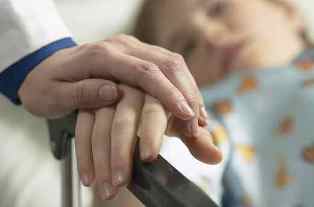October 2nd, 2010 by Toni Brayer, M.D. in Better Health Network, Health Tips, News, Research
No Comments »

Over the years I have had a number of patients with painful kidney stones and once they have passed (or been removed) I have felt at a loss to helping them prevent them. “Stay hydrated” somehow didn’t seem adequate, although we know fluid intake can help stave off recurrent kidney stone attacks.
Some textbooks said “avoid calcium” since most stones are made of calcium oxylate. High oxylate levels can be found in some fruits and vegetables, as well as in nuts and chocolate. Yet there was no real scientific evidence that these foods caused stones. The evidence for who got kidney stones was all over the ballpark and for a physician, that means no prevention advice is really proven.
A new study published in the Clinical Journal of the American Society of Nephrology says that calcium rich foods such as low-fat milk and yogurt can be protective. What? Eat more calcium to prevent calcium-containing stones? It seems that higher intakes of calcium are actually associated with a reduction in kidney stone risk. Read more »
*This blog post was originally published at EverythingHealth*
September 28th, 2010 by Toni Brayer, M.D. in Better Health Network, Humor, Medical Art
No Comments »

This gave me a chuckle from Doc Cartoon:


*This blog post was originally published at EverythingHealth*
September 24th, 2010 by Toni Brayer, M.D. in Better Health Network, Health Tips
No Comments »

We think of chickenpox as a childhood disease, but there are adult cases and they tend to lead to more serious complications.
Chickenpox is caused by the varicella virus and it is extremely contagious. Most people are exposed in childhood (or they receive the chicken pox vaccine), and so adults rarely contract it. It is especially dangerous for pregnant women because the fetus can become infected. The latency period from infection exposure to disease is 10 to 21 days. Read more »
*This blog post was originally published at EverythingHealth*
September 18th, 2010 by Toni Brayer, M.D. in Better Health Network, Health Policy, News, Opinion, Research
No Comments »

 The New York Times asks: “Should the doctor hold a patient’s hand” during emotional times? The comments that follow the short article are the most interesting. Most readers say this question shouldn’t even be asked and that human compassion should always win out. Touch is a human gesture of comfort and understanding.
The New York Times asks: “Should the doctor hold a patient’s hand” during emotional times? The comments that follow the short article are the most interesting. Most readers say this question shouldn’t even be asked and that human compassion should always win out. Touch is a human gesture of comfort and understanding.
But some readers disagree. One said she recoiled when the doctor reached out to touch her hand after telling her that her cancer had returned. It felt really creepy to her. Another asked: “What if the physician is also a Catholic priest or a pediatrician and a priest?” Whoa. It becomes more complex when you get into the psyche of the abused.
I have often thought that one of the appeals of chiropractors is that they “lay on hands” and touch and manipulate patients. With 21st century modern medicine, physicians can treat entire episodes of illness with tests, scans and robots and never actually touch the patient. No wonder people feel “dehumanized” and wonder if doctors really care. Touch and compassion are part of the entire human experience and the physician is present during a patient’s most stressful time. But wait, there’s another side. Read more »
*This blog post was originally published at EverythingHealth*
September 11th, 2010 by Toni Brayer, M.D. in Better Health Network, Health Policy, News, Opinion, Research
No Comments »

The Patient Protection and Affordable Care Act (our government’s name for healthcare reform) may make our already crowded emergency rooms swarm with more patients.
A new study from Health Affairs shows that more than a quarter of patients who currently visit emergency departments in the U.S. are there for routine care and not an emergency. New complaints like stomach pain, skin rashes, fever, chest pain, cough or for a flare up of a chronic condition should not be treated in emergency rooms. They are best worked up and treated by an internist or family physician, preferably one who knows the patient. So why are these patients waiting for hours and spending up to 10 times as much money for emergency department care? Read more »
*This blog post was originally published at EverythingHealth*




 The New York Times asks: “Should the doctor hold a patient’s hand” during emotional times? The comments that follow the
The New York Times asks: “Should the doctor hold a patient’s hand” during emotional times? The comments that follow the 







